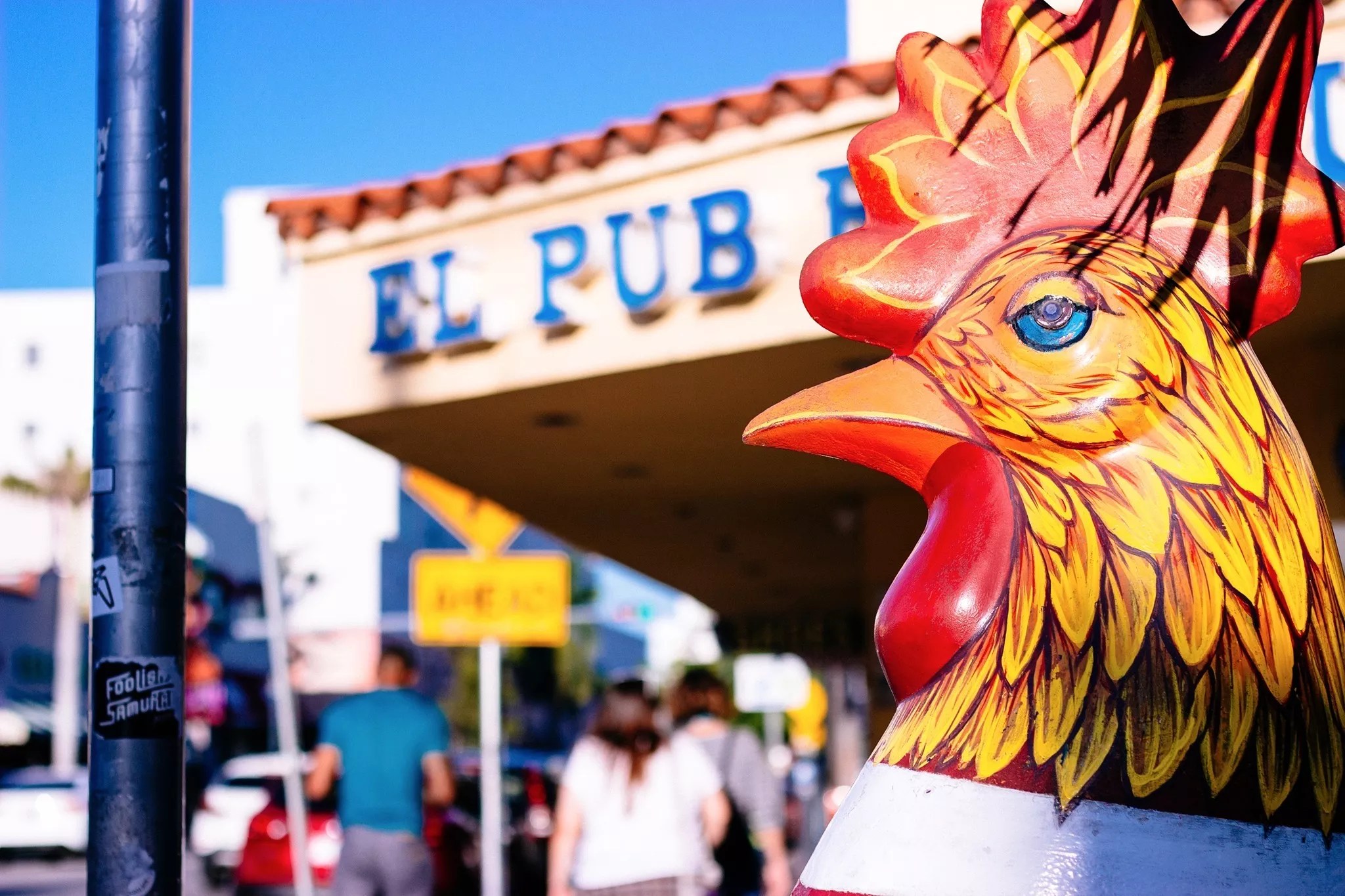
El Pub Restaurant photo

Audio By Carbonatix
Miami’s culinary landscape has evolved over the last fifteen years, making supporting landmark restaurants more crucial than ever before. As a local food writer known as Burger Beast and a New Times contributor, I’ve made it my mission to share the stories of these iconic institutions with the community. This time, we’re talking about the Calle Ocho legend, El Pub Restaurant.
Upon entering the restaurant, guests are met with the phrase, “¡Donde la Cuba de ayer, se vive hoy!” which means, “Where the Cuba of yesterday lives today!” More than just a slogan, it represents the restaurant’s daily promise and heartfelt commitment to celebrating the culture and memories of Cuba before the Cuban Revolution in the late 1950s. And after just one meal here, you’ll know they mean it.
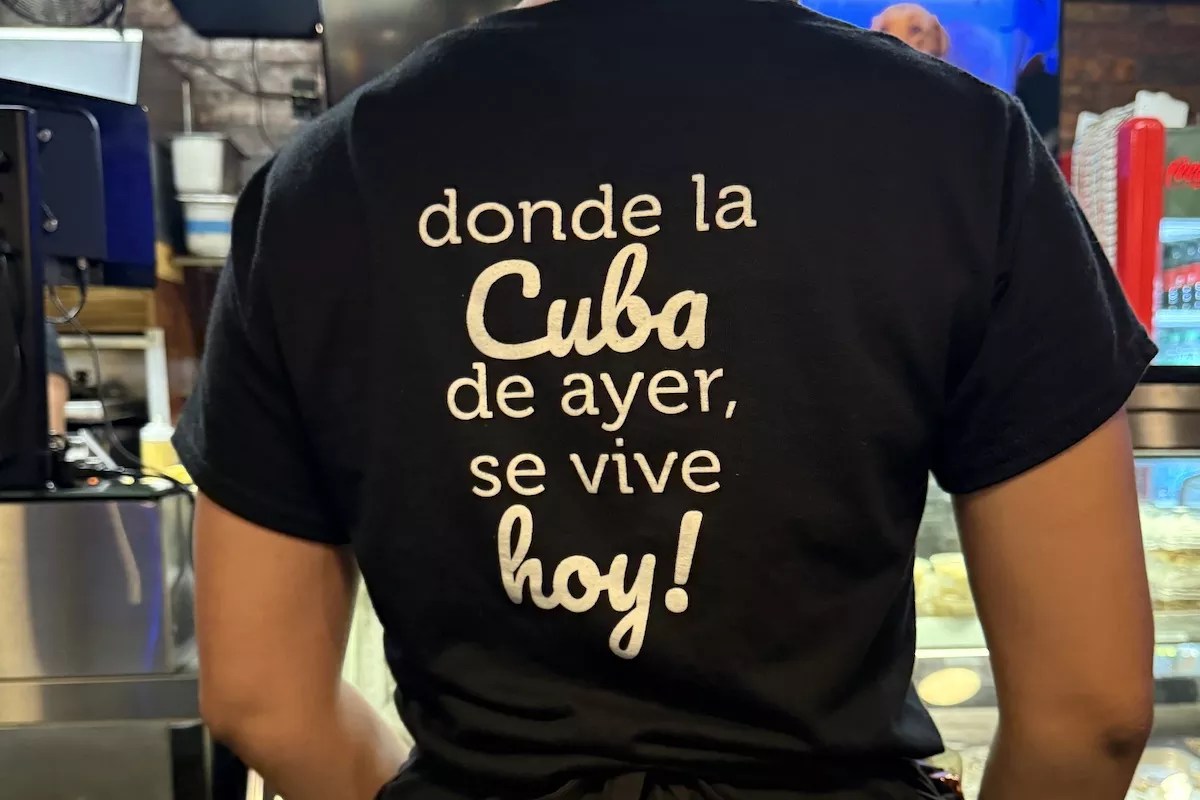
“¡Donde la Cuba de ayer, se vive hoy!” which means, “Where the Cuba of yesterday lives today,” is the restaurant’s core motto.
Photo by Burger Beast
Cuban Exiles Found a Home on Calle Ocho
We’re thankful for you. Are you thankful for us?
We feel thankful for our staff and for the privilege of fulfilling our mission to be an unparalleled source of information and insight in Miami. We’re aiming to raise $30,000 by December 31, so we can continue covering what matters most to this community.
Help us continue giving back to Miami.
Before its ventanita became one of the city’s most photographed landmarks, the building was home to a lesser-known, yet foundational restaurant: Badia’s. In the early 1960s, this corner of Calle Ocho beat with the optimism of newly arrived Cuban exiles trying to rebuild their lives. One of those exiles was Felipe Valls Sr., who would later open Versailles in 1971, the undisputed heavyweight of Cuban exile culture.
But before Versailles, there was Badia’s, a café that served strong coffee, hearty food, and even stronger conversation. It didn’t last forever, but it laid the groundwork for the future. The community spirit, bold flavors, and open-door atmosphere were roots that would retake hold when El Pub moved into the neighborhood.
By the 1980s, Little Havana had become a hotbed of Latin American life in exile, pulsing with the rhythm of Spanish spoken in dozens of accents. Amid that cultural crossroads, a new chapter began when El Pub opened its doors. The exact origins are hazy, like much of Miami’s history, but what is certain is that it quickly became a local institution. The name “El Pub” gave it a familiar, communal feel, a neighborhood joint where regulars rubbed elbows with politicians, musicians, and working folks alike. A spot where you discuss béisbol, the latest news from back home, or even whisper about politics over a plate of ropa vieja.
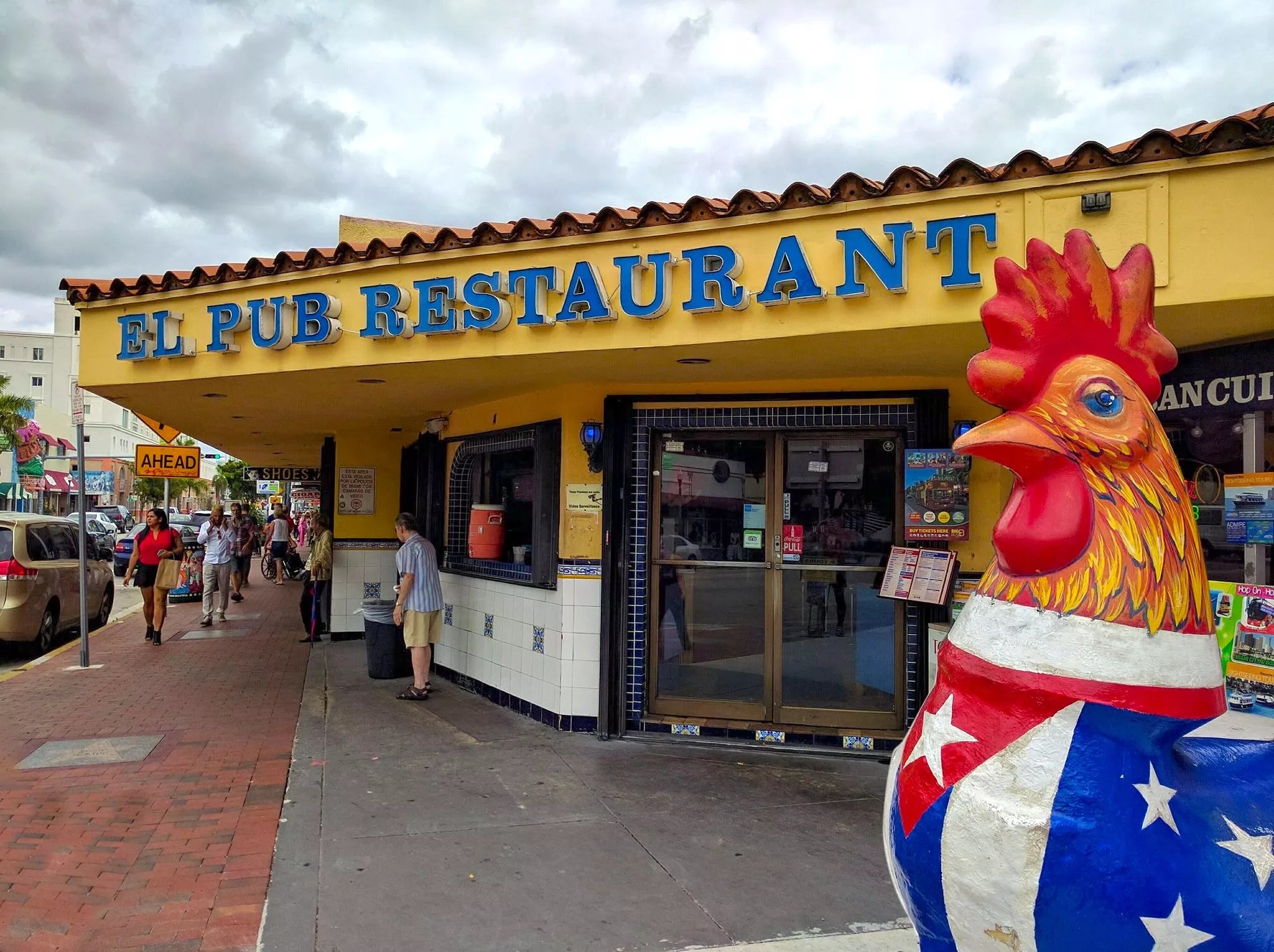
El Pub became a focal point of Cuban-American culture, where even anti-Castro activists and Cuban intellectuals met to discuss events and politics.
El Pub Restaurant photo
El Pub is Woven Into Miami’s Cuban Culture of the ’80s
The restaurant was so deeply woven into Miami’s cultural and political fabric that it became a regular meeting place for anti-Castro activists and Cuban intellectuals. As journalist Cynthia Corzo once wrote, “Intellectuals and anti-Castro commandos broke bread together. Plots to overthrow the Cuban president were hatched daily over a dinner table.” It was the kind of place where the line between lunch and legacy blurred.
Founded by Florentino Pérez, who fled Cuba in 1961, opened the first El Pub in 1967 in Sunny Isles, then relocated to 4735 W. Flagler St. in 1979, where it combined a restaurant, sandwich shop, and piano bar. By the early 1980s, El Pub was firmly rooted on Calle Ocho, where it became synonymous with Little Havana. “Miami’s oldest Cuban community, it beats here, at the corner of SW 15th Avenue and Calle Ocho,” wrote Sandra Dibble in a 1982 Miami Herald article. She wasn’t wrong.
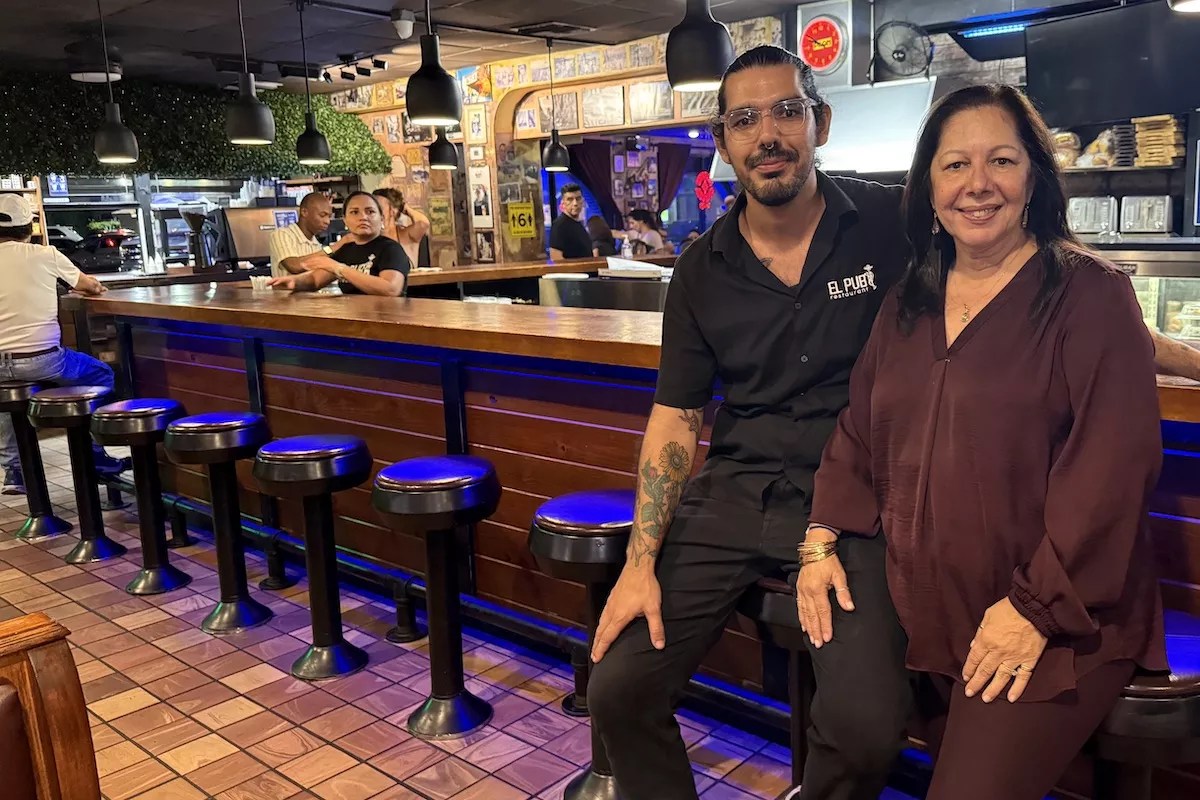
From left: Co-owner Denio Machado and his mother, co-owner Marina Rivera, who is the daughter of Gregorio Rivera, who helped revive the restaurant in the 2000s.
Photo by Burger Beast
The Millennium and a New Era of El Pub
In 1996, after a brief closure and a deteriorating building, restaurateur Heliodoro Coro, owner of El Exquisito just a block away, partnered with Enrique Hernandez and Gregorio Rivera to breathe new life into the shuttered icon. Rivera, who owned El Rincón Criollo in New Jersey, brought the same passion for preserving Cuban culinary heritage. Coro recruited Hernandez, who had worked for him for years, and together the trio reopened El Pub at its current address. What they revived was more than a restaurant; it was a monument to Miami’s Hispanic heart.
Today, El Pub remains family-owned and operated, now in its third generation under the stewardship of Gregorio Riveras’ daughter, Marina Rivera, and her son, Denio Machado. Marina ran the restaurant alongside her brother, Jose Rivera, a beloved figure in the Little Havana community who passed away in January. Through economic booms, busts, and waves of gentrification, El Pub has remained a constant, a steadfast presence in a city that often seems addicted to change.
And at the very center of El Pub’s charm, literally and symbolically, is the ventanita.
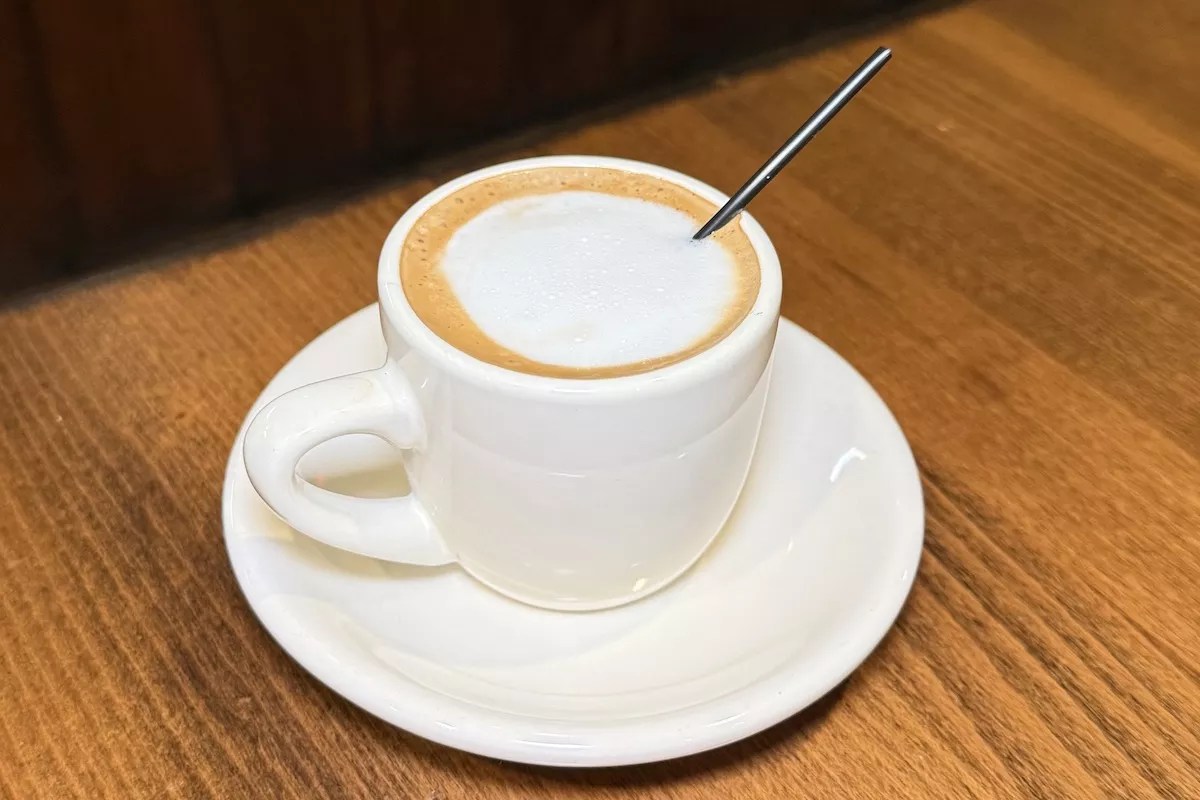
El Pub is home to one of Miami’s oldest ventanitas, walk-up windows serving pastries, coffees, and to-go items.
Photo by Burger Beast
Miami’s Oldest Cuban Ventanita
El Pub’s iconic ventanita, just a simple walk-up window tiled in classic blue, might look unassuming at first glance, but it’s one of the most photographed and beloved spots in Miami. From early morning until nightfall, the scent of Cuban coffee hangs in the air as a steady stream of office workers, retirees, construction crews, and curious tourists line up for cafecitos, coladas, pastelitos, and croquetas.
It’s more than a caffeine stop, it’s a social nerve center where gossip flows as freely as espresso. Lean against the ledge, and you’ll feel as if you’re one with the city, hear the rhythm of conversation, and taste Miami’s soul in a shot of sweet, jet-black coffee passed through the window with a smile. This isn’t just a ventanita, it’s a portal into ritual, memory, and community.
And on Friday evenings, as the sun dips and the rhythm of Calle Ocho shifts from fast-paced to festive, El Pub becomes even more alive. Trio Cubanía, a local Cuban band, performs live inside, filling the air with the sounds of home. The music, like the food, is a familiar part of the sensory landscape of Cuban life that was reborn in Miami.
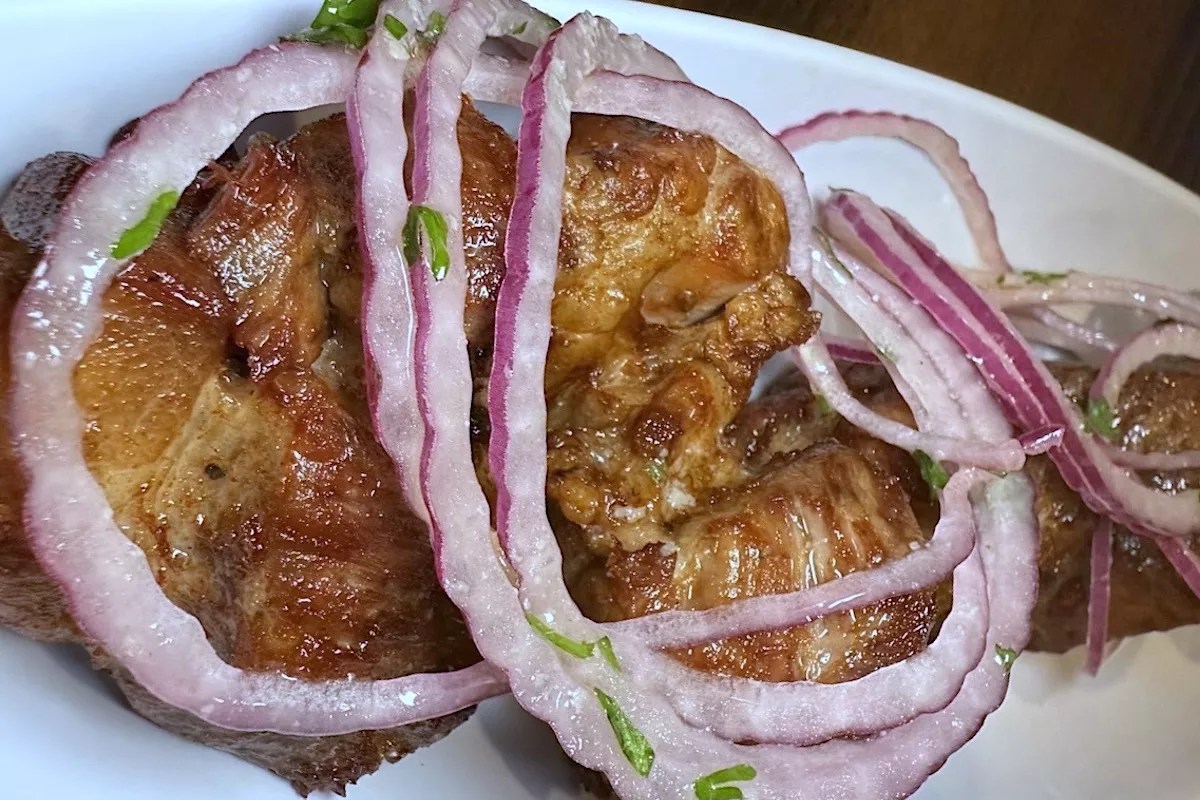
Masitas de puerco, crispy chunks of marinated pork topped with thin rings of red onion, at El Pub Restaurant
Photo by Burger Beast
The Menu is a Love Letter to Traditional Cuban Cuisine
Of course, El Pub’s beating heart is the food. The menu is a love letter to tradition. Start with a heaping plate of masitas de puerco, crispy chunks of marinated pork topped with thin rings of red onion, striking the perfect balance between juicy and crunchy. Try the ropa vieja, long-simmered strands of beef in a tomato-rich sauce that practically demands a bed of white rice and a side of sweet, ripe plantains (maduros). The picadillo is another staple, as are the golden tostones, salty and ready to scoop up whatever’s left on your plate.
Even the sides deserve reverence. The black beans, thick and savory, are slow-cooked and spiced with love. The arroz blanco never clumps. And the café cubano, served in those thimble-sized cups, is sweet enough to wake the dead and strong enough to keep you going through any Miami afternoon.
It’s comfort food for a community that has had to endure the discomfort of exile and displacement. For many Cuban Americans, El Pub is a direct link to a lost homeland. It’s where grandmothers teach grandchildren how to dip bread into cafe con leche, where grandfathers tell stories of Havana before the revolution, and where generations of exiles have found not just nourishment, but a sense of belonging.
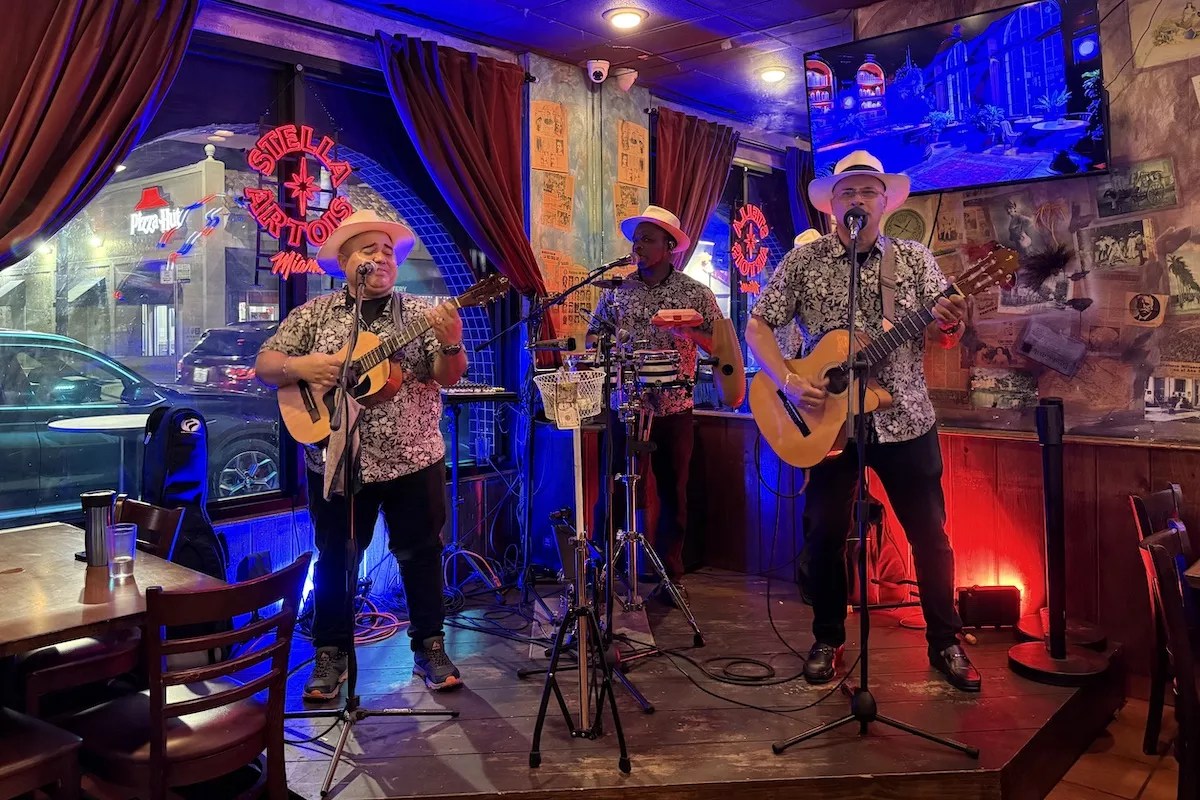
Trio Cuban
Photo by Burger Beast
El Pub’s Enduring Commitment to Community Has Transformed Little Havana
And yet, El Pub has never closed its doors to outsiders. It remains as welcoming to first-time tourists as it is to neighborhood regulars. There’s no judgment here, just an open seat and a hot plate.
El Pub has also been on the frontlines of Little Havana’s evolution. It was one of the first two restaurants allowed outdoor seating on Calle Ocho, long before sidewalk cafes became trendy.
That vision of a thriving, proudly Hispanic Calle Ocho lives on, thanks in large part to anchors like El Pub. It doesn’t need neon or gimmicks. Its strength lies in something far rarer: staying power. In a city where restaurants often vanish as quickly as they appear, El Pub endures. And it endures because it matters.
So, if you’re ever in Miami, skip the tourist brochures (do those even still exist?) and take a walk down Calle Ocho. Stop at the corner near Domino Park, lean into the ventanita, and order a colada. Watch the city go by as you sip. Then head inside, grab a seat beneath the murals of Havana, and order something that tastes as though it was passed down through generations – because it was.
At El Pub, the Cuba of yesterday is still very much alive, and it’s delicious.
El Pub Restaurant. 1548 SW Eighth St., Miami; 305-642-9942; elpubrestaurant.com.